All of these came from various times on Monday, which turned out to be far more productive than the outing that was scheduled for that day, which was postponed until Tuesday, or that outing. It was even more productive than the trip to the neighborhood pond immediately before it. Weird how things turn out sometimes.
Here’s the rundown. Returning from the pond with virtually nothing to show for it, I passed The Jungle, the patch at the front of Walkabout Estates that holds many plants, some of which get out of control easily. One of those is the Japanese honeysuckle (Lonicera japonica,) which I noticed was being visited by a snowberry clearwing moth (Hemaris diffinis.)
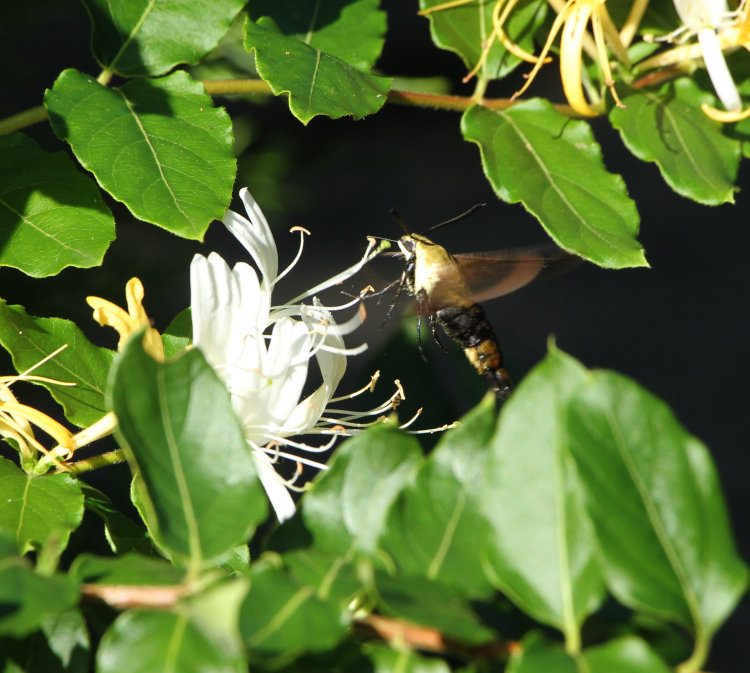
The black legs pin down the species among the two Hemaris variants in the area. Because the flowers and vines were so clustered and overlapping, autofocus was more frustrating than helpful, and I switched to manual – not a lot better, but I could rough-focus and then lean closer or farther to try and keep the hyperactive moth sharp. It failed more often than it worked, but it worked enough to get a few useful frames.
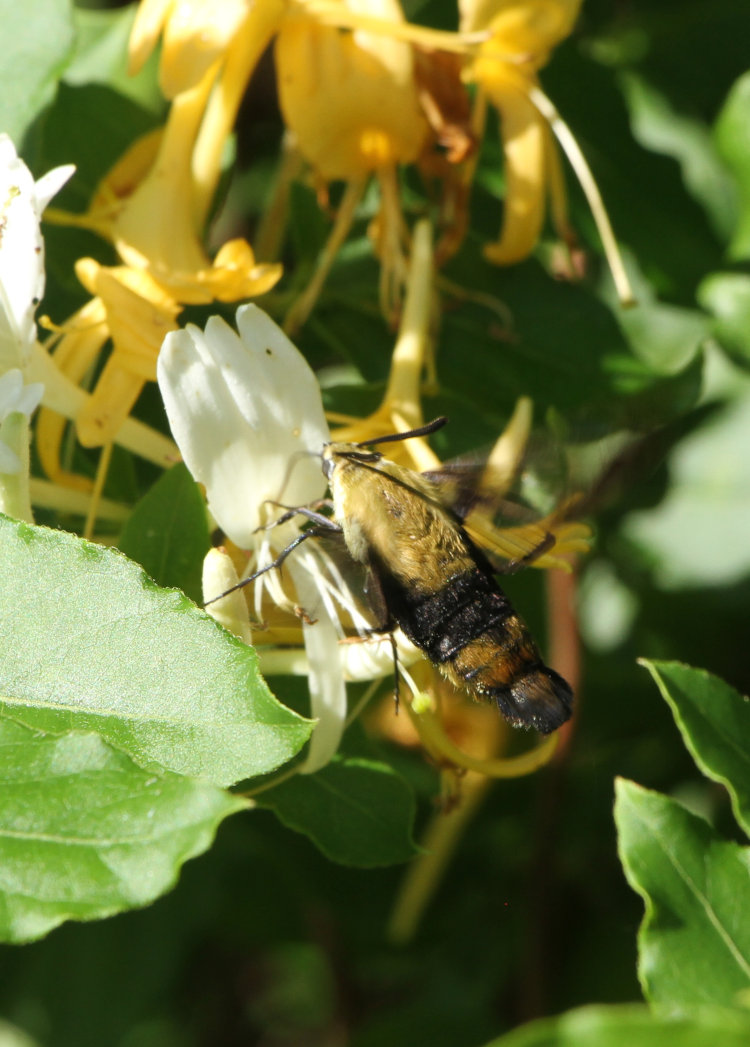
I think the Hemaris moths like the honeysuckle better than the hummingbirds that they mimic, but I like them both so I’m happy to get shots of either, even when I’m trying to get a lot more pics of hummingbirds on natural subjects rather than the feeders.
Soon enough, an eastern tiger swallowtail (Papilio glaucus) came over for the same flowers.
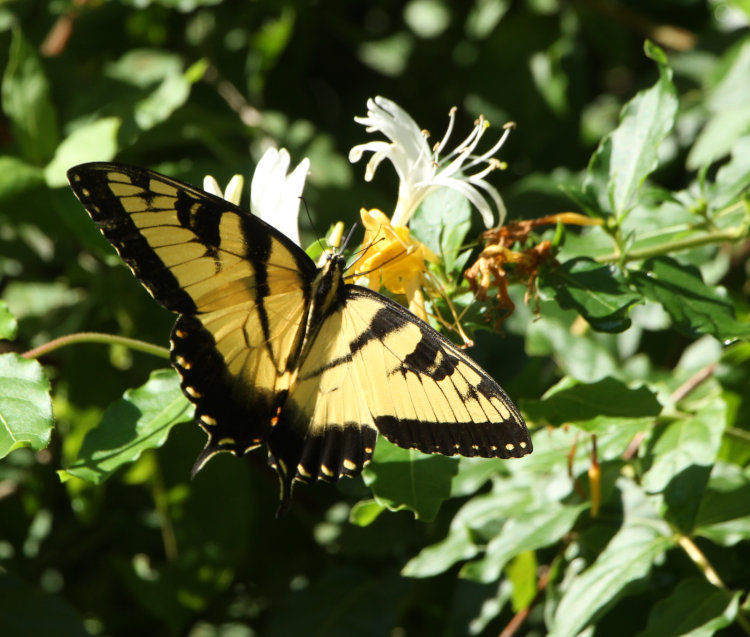
Funny, I planted a bunch of seeds this spring, again, for wildflowers that would attract such subjects, none of which appeared, but the invasive honeysuckle, which I’ve spent a lot of time yanking out of there because they strangle other plants, are garnering all of the attention. There’s a lesson here if I choose to accept it, which I do not. For shit’s sake, at least let me get some native cardinal flowers growing, would ya?
One of my frames had a strange effect.
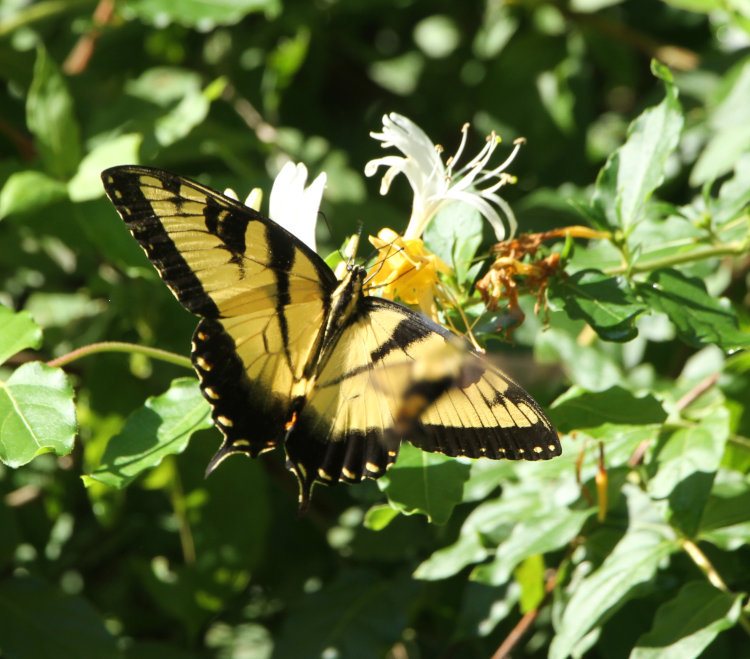
When the shutter is tripping, the reflex mirror within the camera flips up and the viewfinder blacks out momentarily, so I often don’t realize what just happened – in this case, I simply noticed that the Hemaris had appeared by a nearby flower cluster, unaware until unloading the memory card that it had partially blocked the swallowtail just as I got the frame. Immediately afterward, I reframed to get them both.
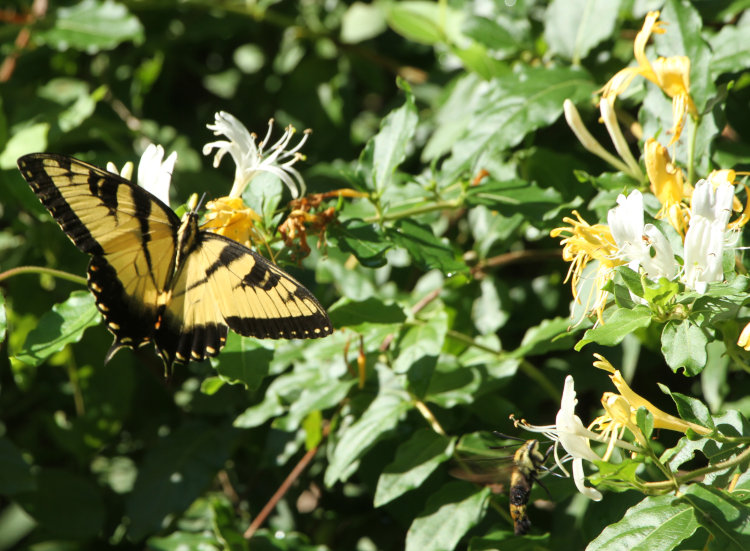
This lasted until the Hemaris got a little too close to the swallowtail and was chased off by a rude flip of the latter’s wings. It’s funny how different arthropod species can communicate.
Now, on passing The Jungle on my way out to the pond, I’d seen an unexplained movement of the vines, watching it for a few moments and finding no reason behind it, then moving on. But I’d suspected it was an anole, and on this return pass, I saw the same thing. This time I watched more carefully, and eventually got a glimpse of the culprit.
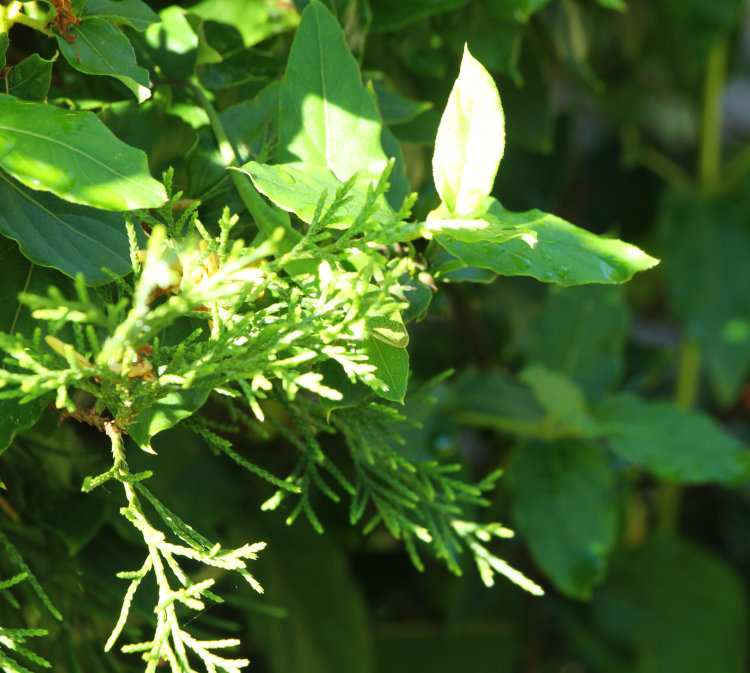
See it? Yeah, this gives you a great idea of why I was having a hard time myself, but I had the slight advantage of noticing movement, provided I was looking in exactly the right spot (or my peripheral vision had my back, which it does quite often.) We’ll go in closer.
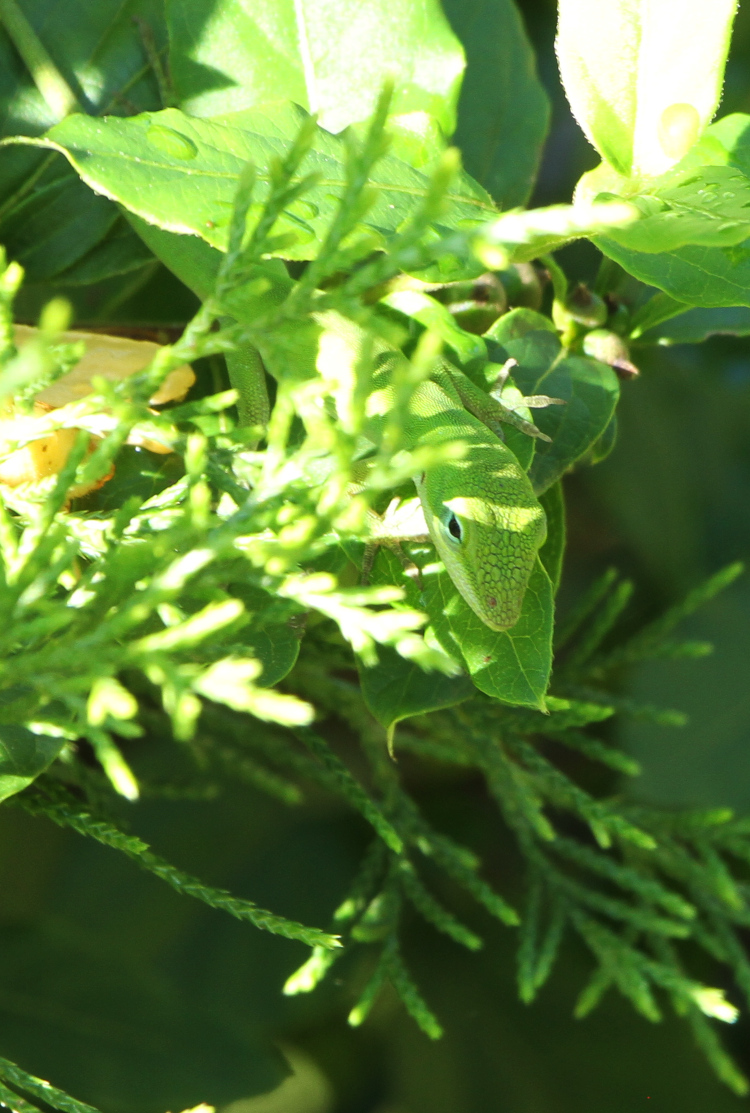
It was right there in the center of the frame, but here, closer cropped and with its dark eye providing some attention-getting contrast, it’s a bit more obvious. I believe I’d seen this one a few days earlier on the oak-leaf hydrangea that shares The Jungle, but this time the anole was slinking around among and within the leaves, barely coming into open view at all – it definitely had no intention of being spotted, making my job more difficult.
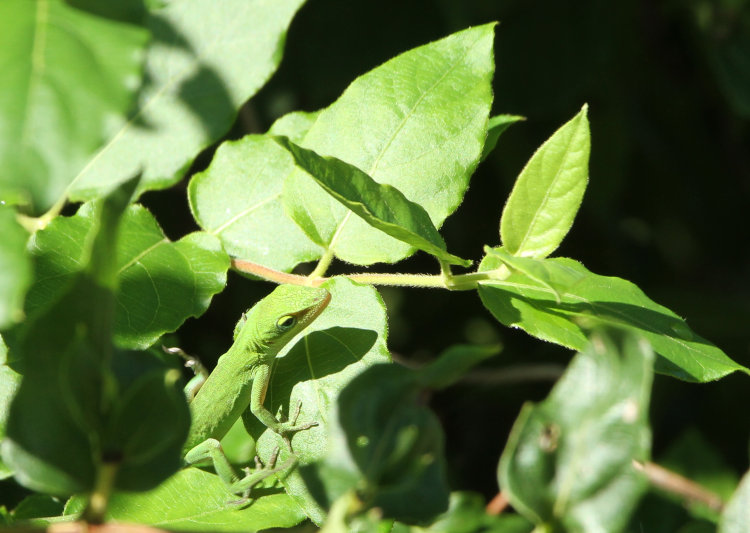
This was as far as it got into the open, and it lasted for a couple seconds at best. Still, I’d been seeing few signs of any anoles recently, and I was going through withdrawal, so I got my fix chasing this one for a little while.
That was all mid-morning. But come early evening, I was out front talking to The Girlfriend and spotted someone else, trotting back inside to get the camera.
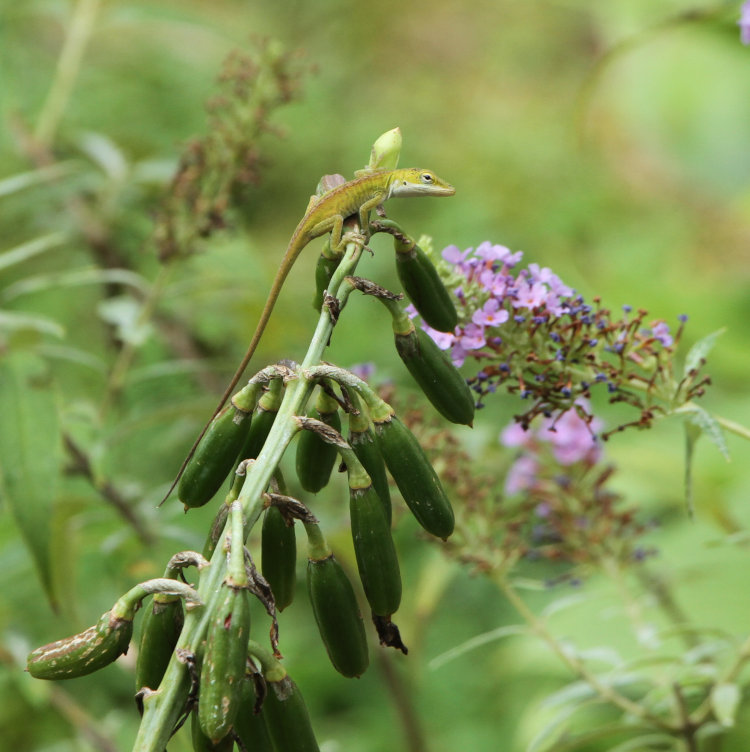
Another Carolina anole, and perched once again on the seed pods of the same hosta plant where I witnessed it every night for a week or so (immediately upon posting that, of course, it stopped – jinx!) I spent a few minutes tracking this one within the plant, while it slinked along trying to be inconspicuous.
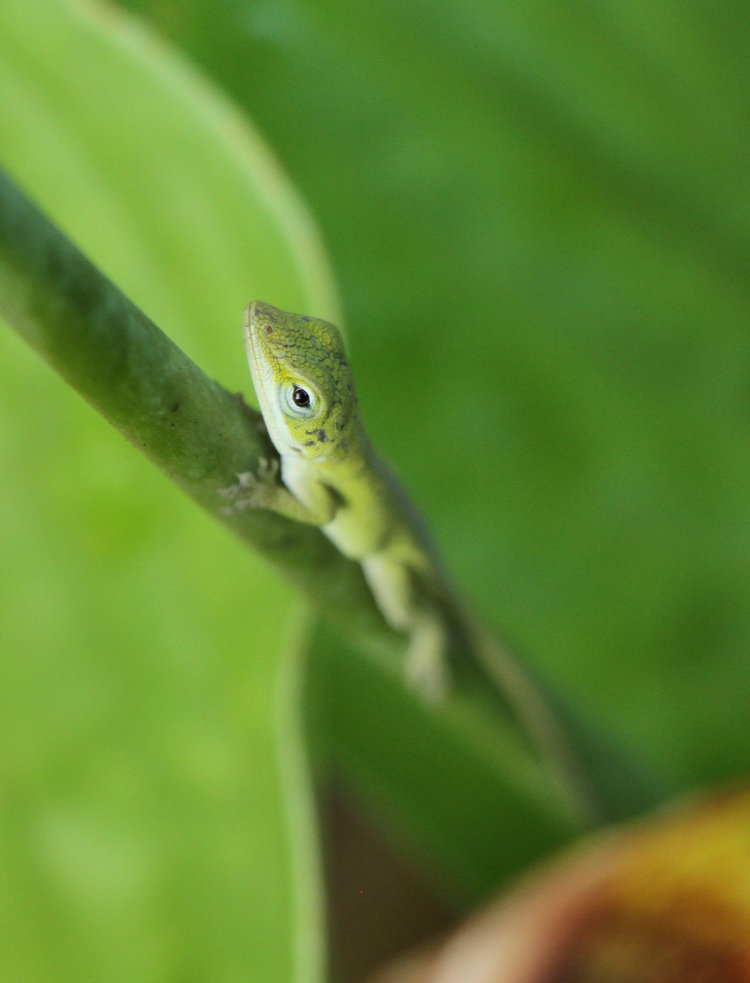
This close view allowed me to see what appeared to be scarring on the head, likely evidence of territorial battles – which was curious because I wouldn’t have imagined that they would engage in such at this size. Now, this was less than two meters from the stomping ground of the juvenile five-lined skink, so maybe? But skinks tend to be terrestrial, climbing broader branches at best, while anoles definitely prefer leaves and foliage; they don’t cross paths too often. Still, something happened.
Well after sundown, I did a routine patrol of the front area, expecting to find this little anole perched asleep on the seed pods again. There was no sign, but the Japanese maple two meters off was serving as a bunk instead.
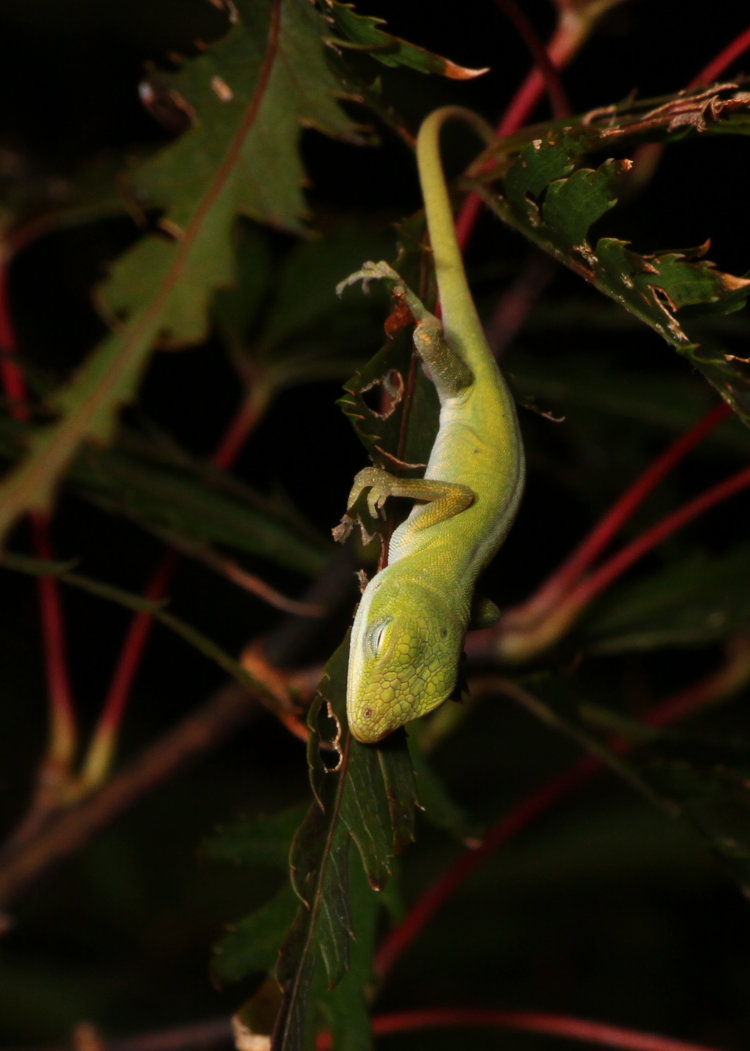
I thought this was the same one, but again, after unloading the memory card, I noticed that this one’s head was devoid of scarring – it was a different specimen. Considering that the previous one had seemed rather small to me, I’m leaning towards this one being the same as the one I’d witnessed a month previously, and the scarred one being newer/younger, perhaps chased to the hosta by this one. Can’t say for sure, but you can believe it if you like.
The following day, I once again found the scarred one on the hosta, so I suspect it had indeed slept there, but likely buried deep within the leaves out of sight. I tried again before I typed this (Tuesday night,) finding the unscarred one on the Japanese maple again and no sign of the scarred one, but the hosta is thick and has plenty of invisible areas down deeper, so not surprising.
But back on Monday night, I did a few frames of a Chinese mantis on the same maple, then turned to go check out The Jungle, to see if I could find the anole that had been there – I’d found one sleeping on the leaves like last year, just once earlier in the summer, and never saw any sign of it again, but I keep checking periodically. However, this time my path was blocked.
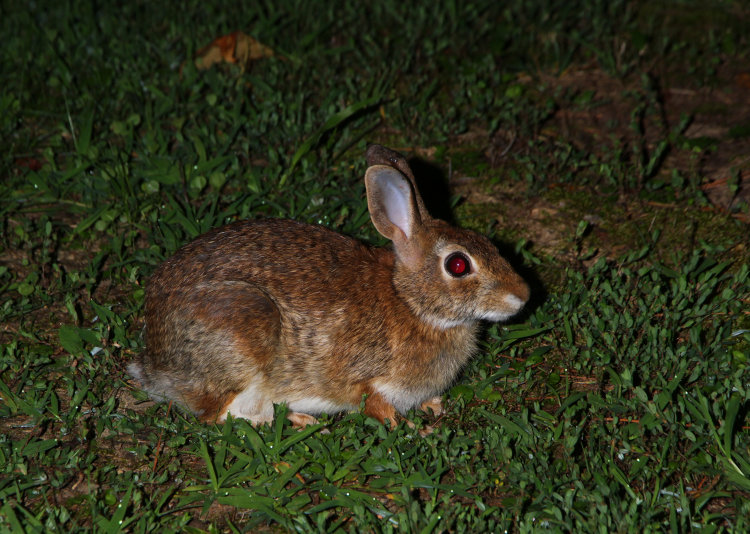
This eastern cottontail (Sylvilagus floridanus) was maybe four meters away, in plain sight in the middle of the lawn, and I’d never noticed it, nor scared it off while I went around the tree firing off frames of the anole and mantis. I adjusted the flash for this image, then let it be – if it hadn’t scampered off by now, I was going to let it forage in peace. We went close to two months during the heatwave-drought with practically no growth from the lawn (or anything else,) and the pickings were slim for these guys, so now that some decent rains had caused the lawn to flourish again, I was going to let it get what it could.
Instead, I went out back to see what was happening there, and found this specimen.
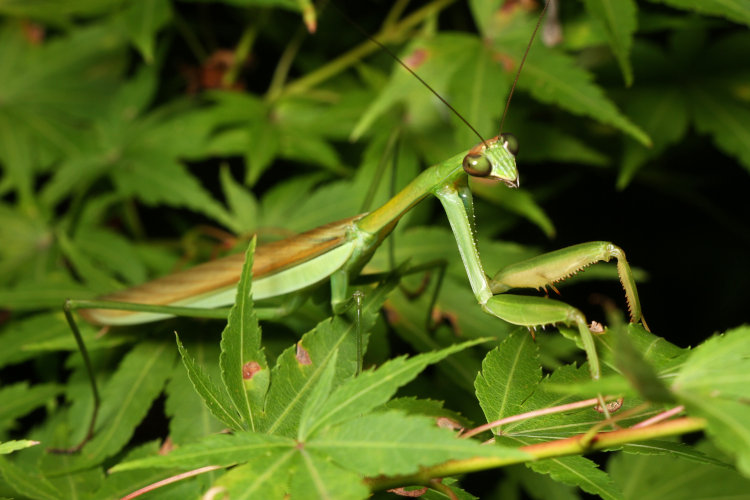
That’s the first adult Chinese mantis (Tenodera sinensis) that I’ve found this year, though I found another Tuesday night too. I knew it was getting to be about that time. The curious thing about this one was, the eyes weren’t fully dark even though it was well into the night now. Typically, this means that it’s about to molt, but it’s already an adult, or final instar – it’s not going to molt again. And I handled this one gently to get it out in the open for the pics, and knew that it had not recently molted either – those wings are fully dried and settled, so at least a few hours past that point. Curious.
I’d let it be and started looking for other things, then suddenly thought, Hey, wait! I’d had other egg cases in the yard this spring, some of them potentially from European mantises. I’d better check. And so returned for a couple more frames with the crucial identifier visible.
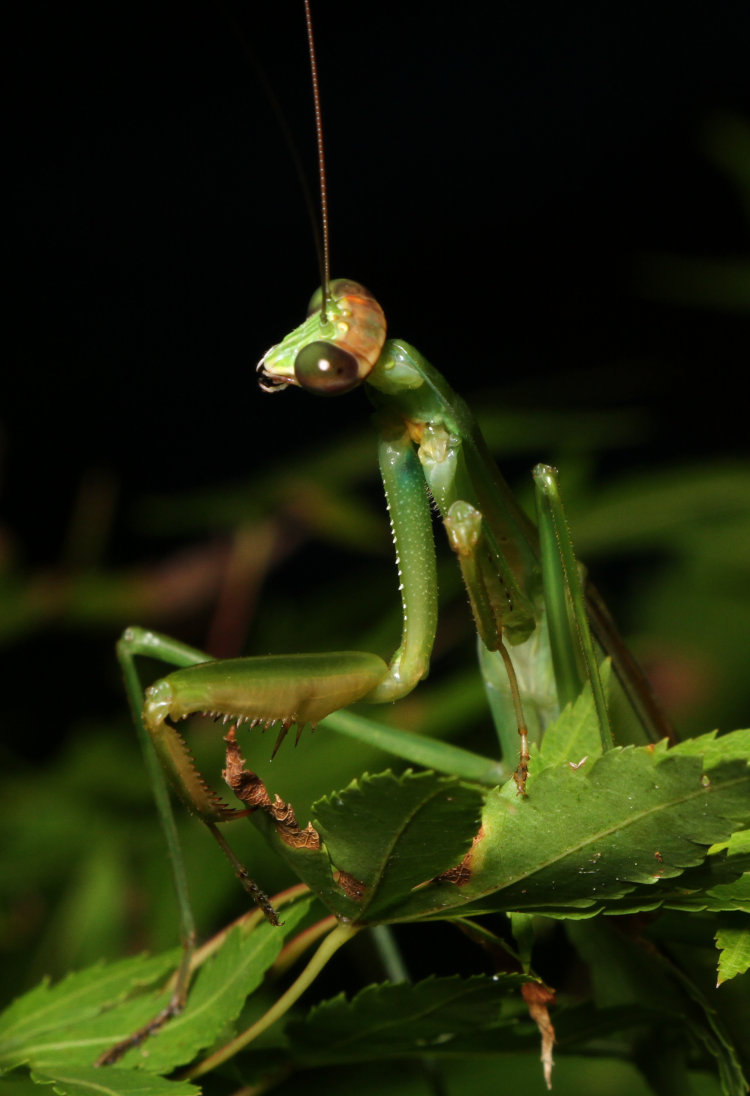
A slight nudge and a shift in my position was all it took to get the identifying image. The forelegs are spread here, the left one pointing directly towards the camera, but it’s the right one we’re looking at; there is no dark spot in the ‘armpit’ which denotes the European mantis. Nope, definitely Chinese. The one that I found the following night, this time in The Jungle again, was the same. I thought I might have spotted a juvenile earlier this summer, but so far have not confirmed this yet. We’ll see, I suppose.
But all in all, those were enough finds for a single day, and helped make up for things being so slow in the past few weeks.



















































